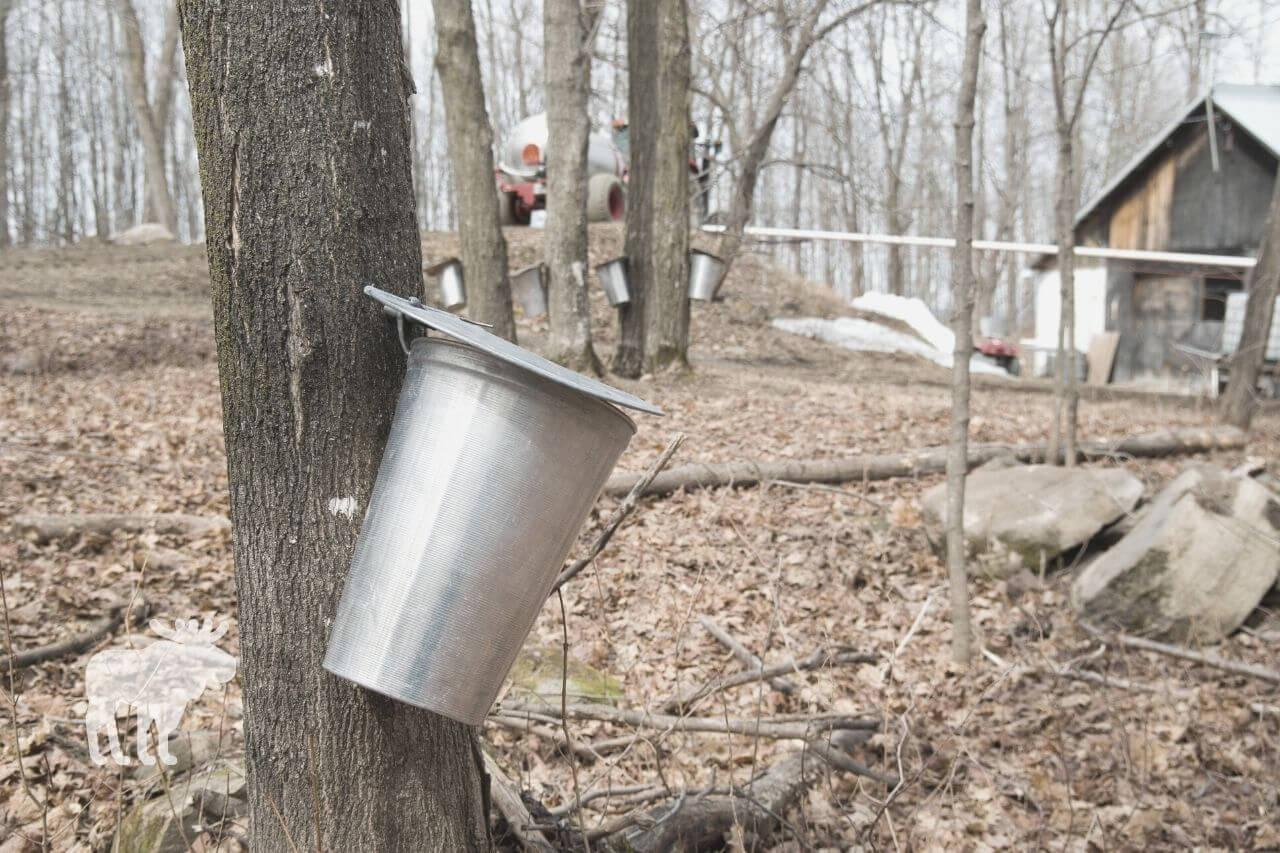It’s your first time collecting maple sap. You’re ready to try your hand at making your own maple syrup. But before you get around to processing your sap, you notice that it has started to change color–it is no longer clear like water, but has a yellowish color and may be a bit cloudy. Should you throw it out, or is it still okay to use it? In this article, we’ll answer this question and more as we discuss how to tell if maple sap is spoiled.
What You'll Learn Today
Why Does Maple Sap Turn Cloudy?

You may notice, if you’ve had sap sitting in your buckets for several days, the sap will start to turn cloudy. It may also take on a yellowish tint.
Maple sap does this when it is starting to go bad.
The cloudiness and discoloration is caused by a bacteria that gets into the sap and begins to grow and spread. This bacteria isn’t necessarily harmful to eat, at least in the early stages, but it can cause the sap to produce a lower-quality maple syrup once it is boiled down.
If you choose to make syrup out of your cloudy sap, you will find that the finished product has a much stronger flavor and darker color than typical maple syrup. It will not be as sweet either and may have a flavor more similar to molasses.
The bacteria grows and reproduces by consuming the sugar in the sap, so the more bacteria there are, the lower the sugar content of the sap will be. A lower sugar content will lead to a more bitter-tasting syrup.
If the sap has enough bacteria in it, it will be no good for making syrup at all. The longer it is left with bacteria growing in it, the more it is likely to spoil and turn yellow.
How to Tell if Maple Sap is Spoiled
Spoiled maple sap will appear yellow instead of clear and will probably be fairly cloudy as well.
That said, there are no hard and fast rules when it comes to determining if your sap is spoiled. Some people will toss their sap if it shows the slightest sign of cloudiness or discoloration; others will use the sap as long as the cloudiness and discoloration is fairly minor.
You can see an example of borderline spoiled sap in the following video:
The bottom line is, different people have different thresholds of what is and is not spoiled. Ultimately, you will have to decide for yourself what your own threshold is.
Just remember: the cloudier it is, the poorer the quality of maple syrup it will produce. Darker yellow sap will also be more spoiled than sap that is only a light yellow.
What is the Shelf Life of Maple Sap?
Uncooked maple sap has a much shorter shelf life than maple syrup, just as raw fruits and vegetables don’t keep nearly as long as canned fruits and vegetables.
Maple sap can be kept for up to two weeks if stored at temperatures near or just above freezing. If you are keeping it at room temperature, it will begin to spoil within just a day or two.
If you have collected a bunch of sap and you can’t get to it all right away, your best bet may be to leave it outside, depending on daytime temperatures. If there is still snow on the ground, keep your sap in buckets in the snow to keep it cold.
If you have only a small amount of sap and it will fit in your fridge, keep it in the fridge until you can get to it.
It’s best to process the sap into syrup as soon as possible after collecting it. The sooner you process it, the fresher the sap will be, and fresher sap always produces a higher quality syrup.
What is the Best Time to Collect Maple Sap?
According to the University of Minnesota, the best time to collect sap is in the early spring, when temperatures are above freezing during the day but still below freezing at night. This may be in March or even early April in some regions, while in other areas, you may begin collecting sap as early as February.
Sap flows freely during these few weeks of early spring, so you can collect a lot of it, which you’ll need for making syrup because it cooks down quite a bit. The sap is also sweetest at this time of year.
What’s more, the relatively cool temperatures make it possible for you to keep your sap outside for a few days if you’re not able to process it right away.
For best results, though, it’s a good idea to tap several maple trees so you can collect a lot of sap in a short period of time; that way, you don’t have to leave it sitting around for days, collecting bacteria, as you wait to collect enough for making syrup.
Conclusion
Maple sap does not have a very long shelf life; for this reason, it’s important to process it into maple syrup as soon as possible after you have collected it so the sap doesn’t go bad. If you can’t process it right away, store it at near-freezing temperatures to keep it good for longer.
If your sap starts to turn cloudy or take on a yellowish tint, it is starting to go bad. While you can still use sap that is slightly cloudy or yellow, it will not produce as high a quality of syrup; and sap that has turned dark yellow or is extremely cloudy should be discarded.